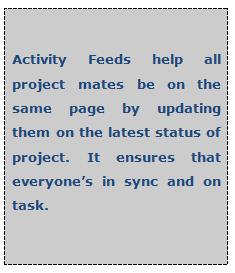Today 50% employees of an enterprise are overwhelmed by content. 70% companies suspect their employees use unsanctioned file sharing methods.
Enterprise File Sync & Sharing (EFSS) is core to any enterprises’ content collaboration strategy.
With the Consumerization of IT and BYOD becoming common at the work place, content sharing with security and compliance is a major challenge. Most of the companies today are haunted by the ‘Dropbox’ problem. Unsanctioned devices and cloud services often put the enterprises at risk.
Limitations of the existing file sharing systems
– Security & Compliance is inadequate. Disgruntled/ rogue users could have copies of sensitive documents on personal devices and use them with vested interests.
– Lack in document collaboration & version control features. There are many versions of the same document present within the systems like email, portals, social media, and other business systems creating lot of chaos & confusion.
– Emails & FTP systems have their own quota limits. Difficult to share large file securely.
– Documents often have lot of meta data (data about documents like when it is created, who owns it, geo-location, track details, speaker notes in presentations etc.) which might not be suitable to be shared outside the company. Existing systems do not keep a tab on metadata and its sharing.
– Customer grade file sharing systems like Dropbox, Apple’s iCloud and Google’s Google Drive (GDrive) lack enterprise features. Can’t address threats caused by users who move data through uncontrolled personal cloud services.
Benefits of EFSS
- Helps in having a single version of truth within a company. Does version control through file synchronization for all users. Checks content overload.
- Reduces physical movement of files. All file access, sharing & syncing happens in a ‘tracked’ environment. Controls data both at rest and in transit. How it is shared and with whom.
- Solves ‘Dropbox’ problem. No unsanctioned devices or cloud storage services are required by employees.
- Removes hidden meta data in documents. So no threat of any sensitive data getting shared with outsiders.
- Encrypted secure transfer for mobile access and initiatives like BYOD.
- Team collaboration and sharing of work using- ‘privileges’, time bound access; conflict resolution. Many people could simultaneously work on same document and any conflict too could be resolved.
- Enables permissions & identity management. Use Active Directory or LDAP for identity management- user authentication & privileged access rights.
- Integrates with existing systems like ECM, WCM etc and becomes the key element of the over all enterprise collaboration strategy.
EFSS could help in having better content collaboration and make the sharing & syncing of files easy, compliant, safe & secure.
Reference Content: Gartner MarketScope for Enterprise File Synchronization and Sharing Feb 2013
I am all pumped up to share more on how EFSS could change the way we work. Let’s clear the farrago and help the enterprise perform to utmost. Am sure the idea intrigues you too. How about giving me a shout?



